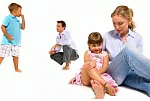Therapy models and session fees
An Initial Consultation Session lasts 60 minutes and costs £80.00. A brief summary report is available on request. Ongoing Therapy Sessions cost £80.00 per 50-minute session. Family Therapy sessions are 1.5 hours at £120.00. Payment is taken at least 48 hours prior to sessions by BACs transfer or Pay Pal. Therapy can be by video call (Zoom, Face time, Skype,or phone) or face-to-face outside of Covid restrictions.
Assessment: The assessment phase typically lasts at least two sessions, with more complex assessments sometimes requiring further sessions. Typically, these first few meetings are about getting to know one another. You may be asked to complete some questionnaires prior to the appointment and on request, you can be provided with a brief report.
Over the assessment sessions I will ask you to share your presenting problem, concerns, experiences, and personal history. In parenting situations you will be asked about your relationship with each chld. At the end of the assessment period I will provide you with a formulation and therapy plan. My objective is to explore your situation with you to gain an understanding of how the issues began and what behaviour may be maintaining it. To form a treatment plan I will need to know your goal for therapy. Regular reviews will take place every four sessions within the treatment plan.
The therapy: Therapy sessions last 50 minutes and may be by remote means. I have limited capacity for face to face clients, especially during the Covid 19 epidemic.
End of therapy review: Therapy will usually end with a review to discuss your progress and next steps. It maybe you do not require any further sessions. Some people like to book in for a couple of monthly sessions before ending the therapeutic relationship completely.
Please note that my fees are reviewed 1st April every year.
How do I know therapy will suit my kind of problems?
This will be discussed at the end of the assessment period and if therapy is not appropriate, I will aim to offer some alternative paths to resolve your issues. Some presenting issues are resolved quickly, maybe within 4 sessions, others may require up to 12 sessions. Longer term therapy is more rare and will depend very much on the presenting problem. Other issues may require less intensive work at fortnightly or monthly intervals. The pattern of sessions will be discussed at the conclusion of the assessment.
Therapy models
I work within an Attachment theory framework as this provides one way of investigating the quality of caregiving and the parent child relationship. Attachment is thought to be a biologically adaptive system to ensure survival. It is defined as ‘proximity-seeking behaviour to an attachment figure, who is usually the primary caregiver, by a baby or child when he or she experiences discomfort such as pain, fear, cold or hunger’ (Chrisvitz et al 1997) and is linked to social development and the development of emotional regulation. Adults attachment behaviour is usually based in early childhood experiences.
Based on interactions with their caregiver, a child gradually forms an internal working model or belief about themselves and their primary caregiver, based on their caregiver’s responses to their attachment needs.
These mental representations refer to knowledge about what tends to happen in relationships, initially with attachment figures, at times of need. Through interactions with their caregivers, children learn about their own psychological needs, their thoughts, feelings, and behaviour, as well as those of other people. The child therefore forms an ‘internal working model’ about how available their caregiver is at times of stress to help to soothe them and to help them cope with stressful situations. The child develops strategies that work for his/her survival dependent on the parent-child environment and patterns of meeting the child’s needs. The resulting relationship is co-developed between caregivers and child. – the child is not a passive receiver of care but works hard to get his/her needs met.
Parent-child attachment is therefore a way of understanding the child’s perception of how available their parent is to them at times of stress hunger or discomfort and whether their parent is sufficiently attuned to the child’s emotional needs to be able to soothe and comfort the child, to help the child feel safe and secure. When this is successful an environment is created which enables the child to explore the world around them with confidence. When it is not successful, children often carry dysfunctional strategies for getting their needs met, through to adulthood.
The four basic attachment styles are:
· Secure
· Insecure ambivalent
· Insecure avoidant
· Disorganised
Insecure and disorganised attachment styles are ‘attachment disturbances’ with most concern being aroused by children with a disorganised attachment style.
The primary purpose of an internal working model is to help regulate negative emotions that are triggered when a child feels insecure. By being able to turn to a responsive primary caregiver to help alleviate distressing feelings, a child learns to regulate their own emotional state.
When the child's primary caregiver is unavailable or represents a threat to the child, this emotional regulation is not learned as the child’s stress regulation system becomes hypersensitive to stressful or threatening situations. A child’s stress response system can be activated if they are threatened by an aggressive or hostile caregiver, including witnessing or hearing arguments between caregivers or, if as a result of neglectful parenting their basic needs for food, warmth, nurture and affection are not met. The environment around the child is important; conflictual interactions between caregivers and others can be frightening for a young child and affects the child’s ability to regulate their emotions in stressful situations. When parents engage is conflict the child has no one to turn to in order to help them organise their emotions.
Early secure attachments contribute to the growth of a broad range of competencies which can include:
· The ability to learn
· Positive sense of self
· Positive social skills
· The future development of successful relationships with important others,
· Greater emotional resilience.
· Promotes the development of ‘Theory of mind’, the ability to empathise with other’s emotions
Securely Attached Children
Children who are securely attached to their caregiver have a relationship that is characterised by sensitive, loving, consistently responsive, available, and accepting care (Howe 2005). Securely attached children can regulate their distress either by themselves or in the knowledge they can get help from their attachment figure should they need it.
Disturbed attachment styles include children who are insecurely attached and who show disorganised attachments. Insecurely attached children experience anxiety about the location of their caregiver at times of needs, as well as uncertainty about the sensitivity of the response they will receive from their caregiver (Howe 2005).
Insecure Ambivalent Child
Children who receive an insecure ambivalent pattern of attachment, experience inconsistent caregiving. Their caregivers tend to be preoccupied with their own emotional needs and uncertainties and can be unreliable and emotionally neglectful. These children will amplify their attachment behaviour to be noticed. They are not always successful, and their ambivalence reflects their simultaneous need for and anger about their attachment figure. This is sometimes described as clinging and rejecting behaviour by the child.
In general, ambivalent children are so overwhelmed by their feelings that they are unable to think and rationalise.
The Insecure Avoidant Child
Other children develop insecure avoidant attachment patterns. These children tend to experience hostile parenting which is rejecting and controlling. The children come to see themselves as unloved and unlovable. They adapt their caregiver’s rejection by over-regulating their emotions – gritting their teeth and denying their needs and longings, vulnerability, or distress as these may drive their parent away.
Children may also develop an insecure avoidant attachment style if they experience their parent as vulnerable (maybe due to mental health problems). In this case, to keep their parent's mood stable and theirby enable the parent to give the best parenting they can, they do not take distressfull emotions to them. To keep their parent's mood stable they @Grit their teeth and get on with life the best they can'.
The Insecure Disorganised Child
Some caregivers cannot regulate their child’s response to stressful circumstances. As a result, their children experience feelings of danger and psychological abandonment (Howe 2005). These caregivers may display behaviour suggesting they are both frightened and frightening / dangerous or threatening. Children experiencing this caregiving often behave in odd ways in the presence of their caregiver e.g. moving towards the parent and falling or backing up to their parent. The parent is the familiar figure but also a dangerous one. This is known as fear without solution. The child shuts down emotionally and this results in a disorganised attachment style. The child never knows whether they will be picked up and cuddled or shouted at and hit. The result is they find it difficult to regulate their emotions and have little resilience to distress.
When inadequate and damaging child-caregiver interactions persist over time, the child’s stress response system is activated for prolonged periods in which they will produce chronically high levels of the hormone cortisol (Tarullo and Gunnar 2006). Excessively high levels of stress and prolonged exposure to cortisol are harmful and have a toxic effect on the child’s developing brain. The child’s stress response starts to self-regulate around 6 months of age and persistent maltreatment may lead to poor emotional regulation and maladaptive responses to stress (Tomalske and Johnson 2010).
The Insecure Disorganised Child does not have a specific response to any situation because they never know whether their parent will feed them or not, hit them or not. There is no pattern to their caregiver’s response in any situation.
What doe the child’s attachment style mean for its future?
Whatever strategy the child develops in relation to its caregivers and environment, they are likely to continue to use that strategy into adulthood. For the insecure patterns of attachment that often means whereas the strategy was functional in childhood (it kept them alive or their needs met) as an adult the strategy becomes dysfunctional. The adult does not recognise this and cannot understand why it is difficult for them to maintain important relationships.
Please select the payment box below. Click add to basket and follow the instructions selecting the payment method you require.

